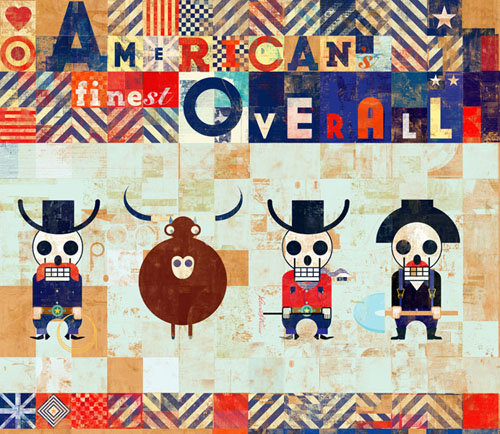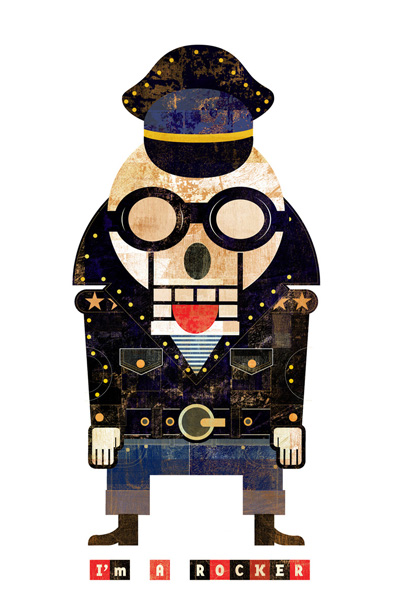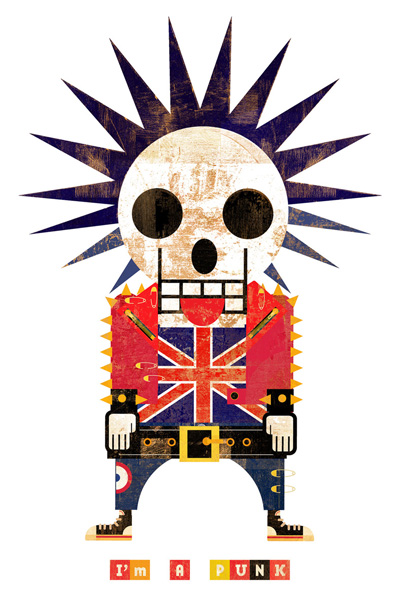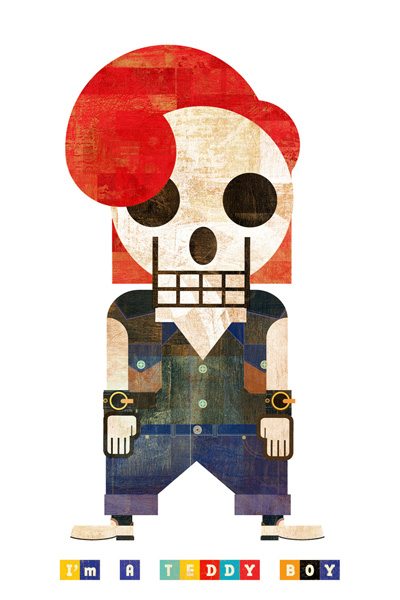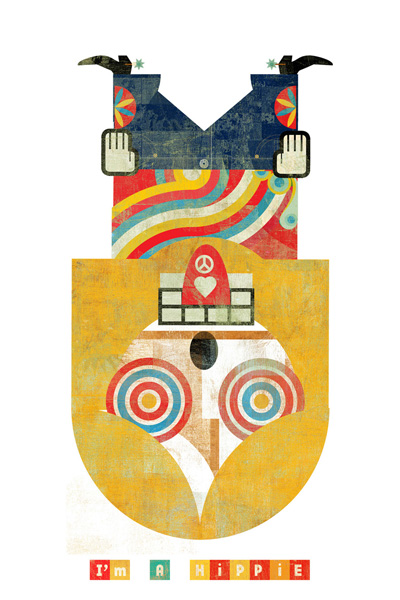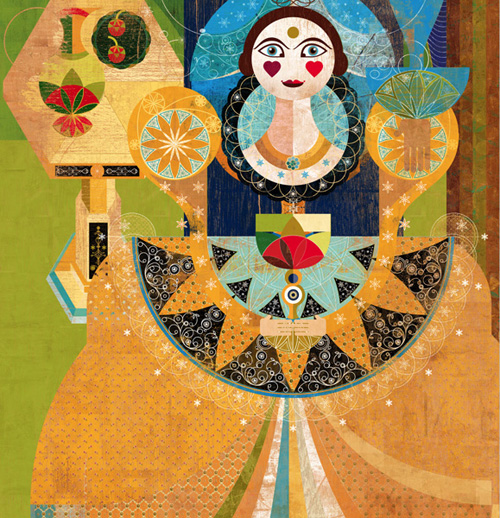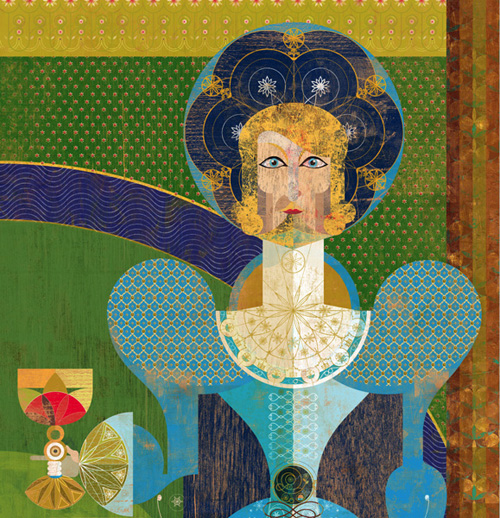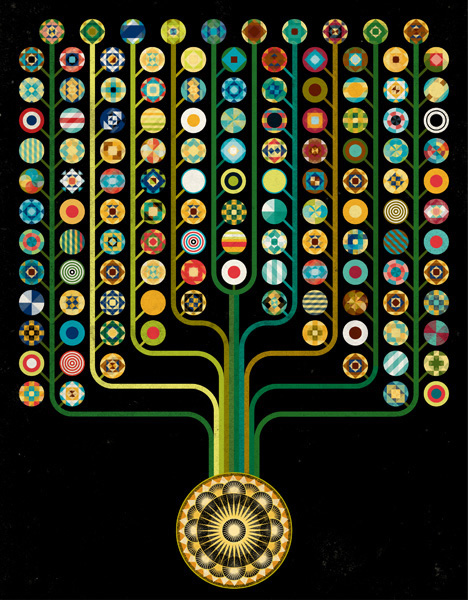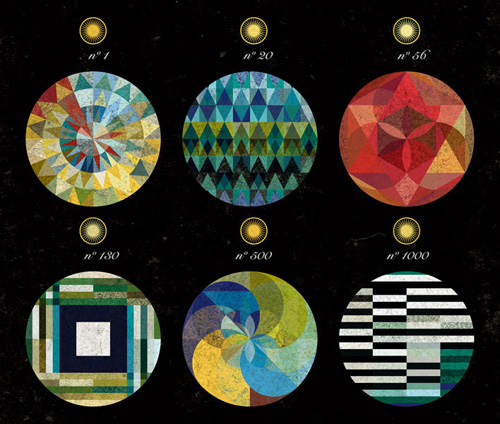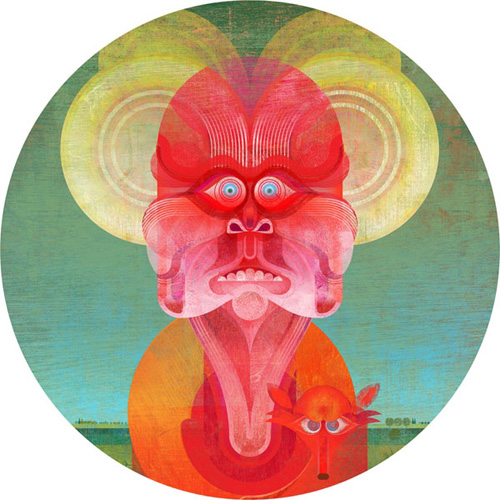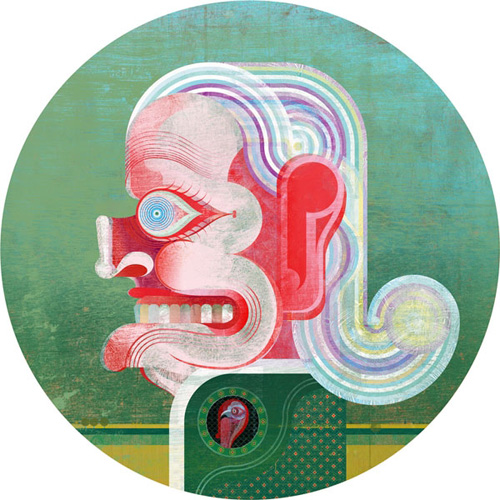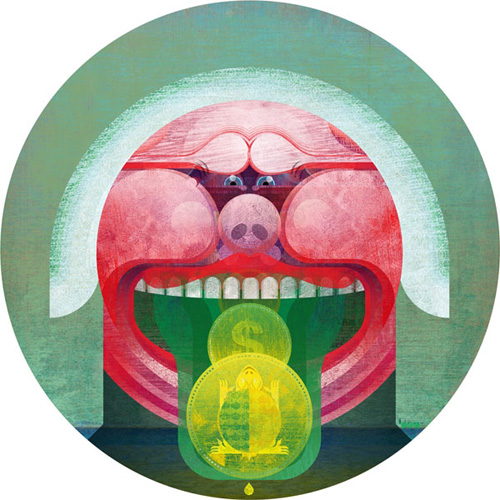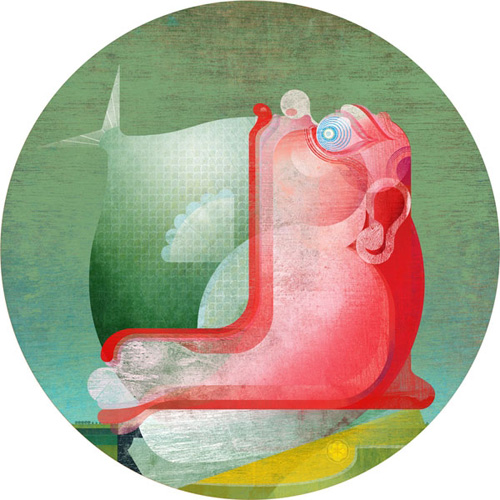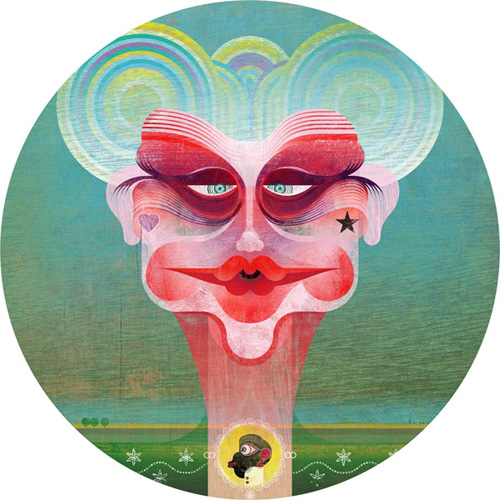For our sixth interview here at illostribute, I’m very excited to have the talented Argentinean illustrator and graphic designer Christian Montenegro. Working for an international collection of diverse clients such as Levi’s in Argentina, Swatch in Switzerland and numerous magazines in the UK and United States, Christian’s work has been recognized by several industry publications including, most recently, Lüzher’s Archive 200 Best Illustrators for 2011. I first came across Mr. Montenegro’s work a few years ago and was immediately taken with his attention to detail, brilliant use of color and highly-designed geometric compositions.
Tell us something about your background and how this has influenced you as an illustrator?
I grew up in the small town of Gran Buenos Aires (this is the ring of cities surrounding the city of Buenos Aires) and at the time, 30 years ago, my small town was on the boundary where the city started to mix with the countryside. My parents were away from home for nearly the whole day, since they had to travel two or three hours per day from home to their job, and so I was raised to a large extent by my maternal grandmother. And this time had a big influence on me. She is a Portuguese peasant with a Catholic background and through her I encountered a very primitive Europe–I would say a “pre-industrial era.” This time with her also made me especially sensitive to religious issues.
I also watched a lot of television. I wasn’t the kind of kid who spent too much time playing in the street. At the time, you could only see four TV channels (something funny–I watched black and white TV! Color TV started in Argentina in 1980). On those channels, I’d see Japanese animation (I was a big fan of Mazinger and Robotech), and a lot of American cartoons from the Golden Age (their rights for broadcasting were cheap). This was the typical visual information available to a child my age. Also, I’d read comics and I was fascinated with airplanes. These were the things I drew from a very young age. And at the time, I only had two books on Fine Art.
How did you come to study under Alberto Breccia and what was that experience like?
When I was 15 years old, I don’t know the how or the why but I decided to learn to draw. To draw meant (to my 15 year old mind), to have the skills to draw from life, as if it was a photo. Something funny–I was sad because I thought that I was much too old to start! Breccia was a relative of my paternal grandparents, so I had an appointment with him. I hadn’t seen his work. He explained that he taught comics and not drawing. And I started to study with him. I was very lucky because not only was he one of the most important Argentinean comics artist, draftsman and an excellent teacher, but he also taught a philosophy of work. He used to say, “You cannot separate your work from who you are. You must put all of yourself on the drawing board.”
You then studied graphic design at the University of Buenos Aires. Was your school experience a positive one?
It was a breakthrough in my preparation. Breccia had an expressionist sense for graphics, full of energy and drama. Studying graphic design, I developed an analytical sense of the discipline. At the university, I developed the idea of style as a graphic system. I think that both of these preparations complemented each other.
At what point did you decide to pursue illustration as a career?
Something important to note, is that there is no Art School for Illustration in Argentina, either you’re self-taught or you attend an artist’s atelier. When I started to work in Argentina, there was no market for comics and all the magazines were fading away. So I decide to make a living with illustration. I should add that comics were an excellent exercise for learning illustration. The discipline is really complex, it bonds graphic design and narrative in the same space. The characters, the costumes, the light, the backgrounds, the point of view–all are up to you. In a way, I would say it’s like making a movie all by yourself.
Do you consider yourself an illustrator or a graphic designer? Do these labels even matter?
I consider myself an illustrator who uses concepts from graphic design. I don’t know if these labels matter, the line between both disciplines is not clear. Actually I think the lines between art, illustration, graphic design and other disciplines are unclear. I think that it’s best not to subtract but to take from the sum total (I come from the Baroque tradition!).
How would you describe your work? The juxtaposition between robust texture and precise shape, coordinated through multiple layers of color suggest a background in printmaking. Have you studied printmaking?
My background isn’t in printmaking but I’ve studied how printmaking works and taken what I think is good for my work. I would describe my work in this way: My work is the mix between an emotional (expressionist) sense of color and line, and the analytical way of constructing an image. A Frankenstein-style between the Die Brüke and Bauhaus I would say. My style is in line with the Latin-American Baroque tradition–this means: you mix everything!
Describe your creative process. What tools do you use? How much preparation takes place outside of the computer?
I draw in Adobe Illustrator and I finish the image with Photoshop. I never start to work on the computer without a previous pencil sketch. I carefully read the text and get a visual concept from it. In my personal projects, before starting a pencil sketch, the first thing I do is research. I work with this background as the basis. The final result might end up being a solution that has nothing to do with it, but it’s the consequence of this first step.
How long did it take you to develop this method?
It was around five years. Starting a career in graphic design was like starting from scratch and I stopped drawing for a time. Then, through the study of several subjects, I rethought everything I’d done and put it all down on a blank piece of paper.
Do you have a favorite part of the image-making process? And if so, way?
Yes, the research. Especially with personal projects, because I learn. I think a good project is one that when you’ve finished, you’ve grown as a person.
What is a typical day like for you? Is there a certain time during the day when you feel you do your best work?
I wake up, I have breakfast, I read the news and check my emails, then I start to work. There isn’t a specific time, but something I hate to do is work late into the night. I’ve realized that when I’m in this particular situation, I don’t want to do a good job but just finish it. And this takes away from the pleasure of working.
Do you keep a tidy studio?
I try but I can’t, the chaos in my studio is the natural consequence of working. Tidy means I’m not in the studio!
Do you have a favorite artist or illustrator? How have they specifically influenced your work?
I have a lot of favorite artists and it wouldn’t be fair if I were to make a list. I’m interested in all the graphics of humankind, from the Altamira caveman to now. You can learn from them all. But for this interview, two illustrators that I feel have strongly influenced my career are Oski (Oscar Conti) and Saul Steinberg. I like how they think through their illustrations. Their work is like philosophy to me. Oski is the relationship between the image and text. Steinberg is the image as a graphic thought.
What is your opinion on influence and appropriation? I have noticed that certain aspects of your work, particularly from your “Muertitos” series, have been openly lifted by other illustrators for use in their own work. Is this flattering or frustrating to you?
I didn’t know that, can you give me links?! Of course it’s frustrating but I have to look forward, it’s the best thing I can do. I have found some people that use my style but I can see they’re not evolving–they’re doing the same style I did years ago.
Copying someone else’s style is understandable when you’re learning, when you’re looking for your own style. The point is, when someone else’s style becomes your style–you’re not using your own ideas. Your way of understanding the world. You’ll have a personality crisis at some point! It’s sad because you’re simply shadowing someone else.
About your first question: To think I have a brand new original style, without references would be silly. The recorded history of humankind is over 5,000 years old. And before using a pencil for the first time in my life, I’d already seen millions of images. How could these not influence me! The point is the way you appropriate all this background, and then come up with your own style.
What are you interested in outside of illustration? Do these interest inform your work in any direct way?
I’m interested in all that concerns the human sphere. I’m interested in all that we call culture (made by man). I get a lot of ideas from this. This is something that I learned in my university preparation.
Do you listen to music when you work? What’s your favorite genre?
Yes, I do. Unfortunately, over time, I’ve lost a favorite style. Now I listen to whatever random song my iPod brings up.
The lines that once separated graphic design, illustration and fine art continue to disappear. What is your opinion concerning this (relatively) current development?
I think it’s great. Actually, when you read about art history, you learn the divisions between disciplines, in the way that we know them, have never existed–not since Adam and Eve! For example, the concept of Fine Art didn’t start until the 18th century. As society changes, the concept about low and high culture changes too.
Do you have any new or recent projects you’d like to tell us about?
Yes, I’m working on a book with a historian. He’s chosen a selection of historical documents and I’m illustrating them. It’s a monster book about Argentinean history.
All images © Christian Montenegro. To see more work, please visit his website at www.christianmontenegro.com.ar.
Thank you for taking the time to do this interview and for participating in illostribute!
Toby Thane Neighbors for illostribute.com
Read More